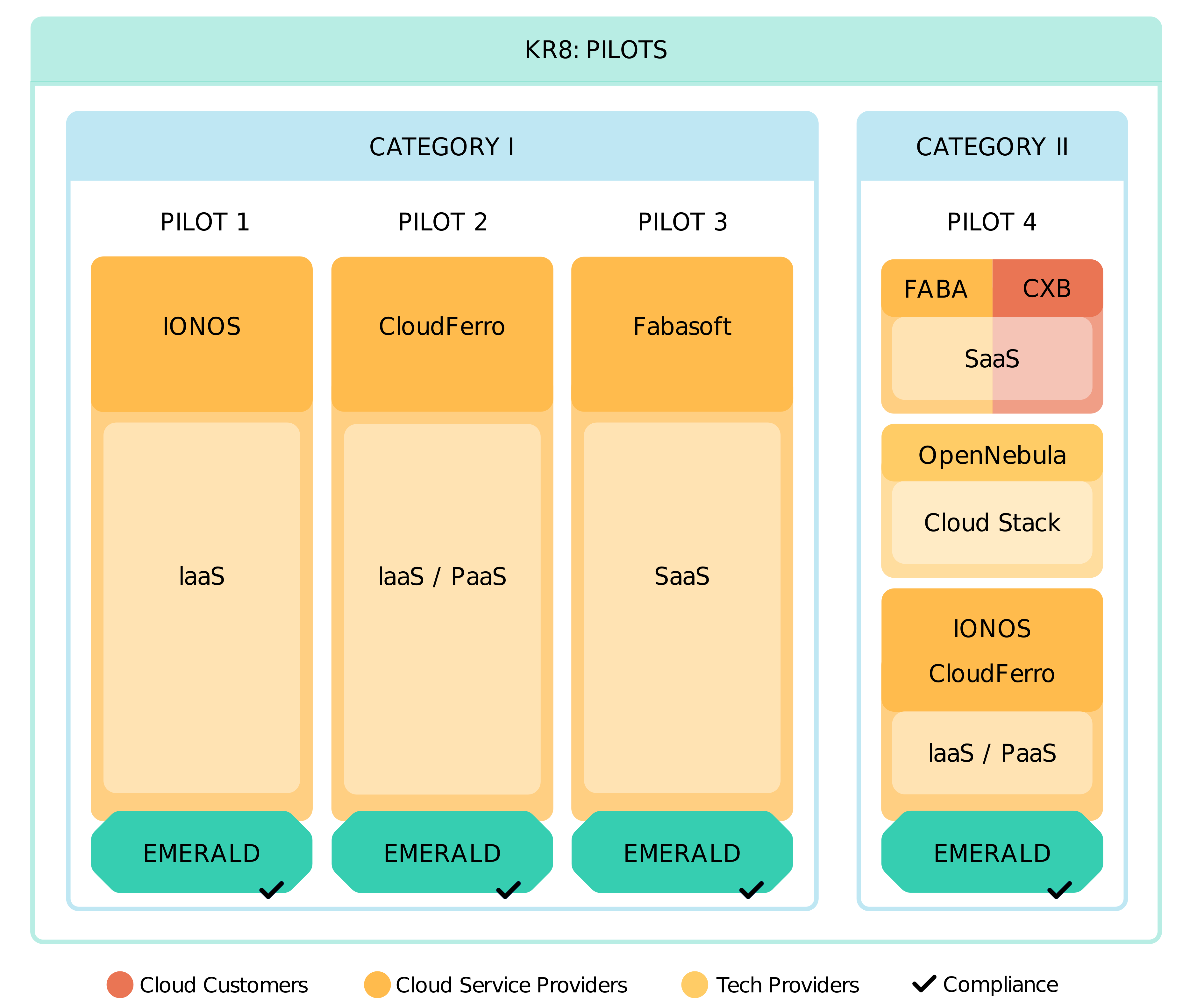The first EMERALD face-to-face consortium meeting took place at the beginning of March 2024 in Bilbao, Spain. One goal of this meeting was to get to know and to better understand our four pilot partners – IONOS, Cloudferro, Fabasoft, and CaixaBank. We have conducted an interactive interview session with the pilot partner to elicit their needs and expectations for EMERALD. We will present the interview questions (Q) and a short summary of the answers given by the pilot partners (PP) to outline the pilot partners’ needs and expectations towards the EMERALD project:
Q: How do the current audit preparation processes look like for your pilot?
PP: All pilot partners describe the audit preparation processes very similarly. Typically, these activities include repetitive manual processes that are very time consuming and involve many people from different departments. Depending on the audit type, audits take place yearly or up to every 4-5 years. The chosen certification scheme and the need for a new certificate or renewal influence the audit frequency.

Q: What are the “pain points” for your current audit process?

PP: The pilot partners have to deal with very similar “pain points” during the audit preparation phase. Pain points mentioned by the pilot partners are that i) preparing for an audit is a very costly process as it involves consultancy from outside and many people and departments from inside the company, ii) it is a very time-consuming process to collect and prepare evidences for all requirements of the audit, and iii) it needs manual verification of extensive documents.
Q: What tools are you currently using for the audits in your pilot?
PP: So far, the pilot partners use different tools for preparing an audit. However, nearly all pilot partners use a huge Excel Sheet as the main management tool for managing their requirements of the respective standards. One row represents one concrete requirement. For each requirement, each row contains information about how the respective requirement is fulfilled (including links to the respective documents and evidences), who is responsible for the requirement, and what the status of the requirement (e.g., open, done, input awaited from person(s) X, …) is. Additionally, the pilot partners use other tools for managing the requirements, such as JIRA, OpenStack solutions, or dashboards and tools tailored to their needs.
Q: Are there any specific tasks that shall be solved by EMERALD?
PP: The pilot partners have concrete suggestions for specific tasks that shall be solved within the EMERALD project and especially the EMERALD UI/UX. The pilot partners came up with suggestions such as i) automating the collection and identification of documents relevant for presenting evidence regarding requirements, ii) supporting the whole workflow management especially including the manual processes, and iii) allowing automatic evidence extraction from different documents (for organisational and technical requirements likewise). One quote was additionally: “We would like to get rid of our big excel sheet” (this Excel Sheet is used for managing all requirements for one respective standard).

Q: How can EMERALD help mitigate these “pain points”? Expectations?

PP: To mitigate the existing pain points, the pilot partners have several ideas and expectations about where the EMERALD project might come into play. For example, the EMERALD project could help to i) reduce the manual work of evidence collection, ii) support the verification process of evidences in relation to requirements, iii) reduce the time for preparing the audits and the number of persons involved in the process resulting in the reduction of personnel costs, and iv) if possible the solution developed within EMERALD should be accepted by auditors. All pilot partners would highly appreciate this; however, this wish goes beyond the project’s scope.

